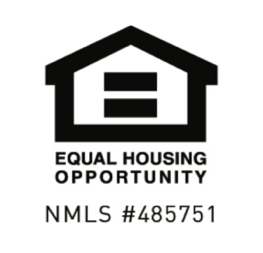Depending on your financial needs and current situation, refinancing could help lower monthly payments, change the terms of a loan, switch from an adjustable rate mortgage (ARM) to a fixed-rate loan or offer other benefits. Refinancing can be a smart way to help you better manage your finances or even free up some extra money every month.
However, like most financial decisions, refinancing comes with many factors to consider. Therefore, you should consider your financial goals, your existing mortgage terms, and the wider economic conditions before jumping into a refinance.
What is Refinancing?
In simple terms, refinancing a mortgage means paying off your existing loan and replacing it with another. Homeowners use refinancing for a number of reasons, such as getting a lower interest rate, shortening loan terms, or consolidating debt.
There are two primary types of refinancing: Rate and term refinancing and cash-out refinancing. Each suits different financial goals and offers benefits and pitfalls.
Rate and Term Refinancing
Mortgage rates constantly fluctuate depending on a variety of economic factors. If you purchased your home before the 2008 recession, interest rates have likely fallen precipitously since you first signed on your mortgage. In situations like these, rate and term refinancing might very likely help lower your monthly payments.
In a rate and term refinance, your loan’s principal stays the same but the interest rate and/or repayment period changes. When mortgage rates drop, many homeowners typically use rate and term refinancing to lower their interest rates, as well as guard against future rate changes. Many also use rate and term refinancing to switch from an ARM to a fixed-rate mortgage.
Benefits of Rate and Term Refinancing
Choosing to refinance for a lower interest rate can save you money on your monthly payments. This can help free up money to pay off higher-interest debts or make investments with a higher return than the loan’s interest rate.
Homeowners also use this type of refinance to switch from an ARM to a fixed-rate mortgage. Switching to a fixed-rate mortgage provides more predictability, especially when rates are rising, since the interest rate remains one, unchanging percentage. Making the switch might also make sense for homeowners with a large balloon payment due in the near future.
Factors to consider with Rate and Term Refinancing
The largest cost of refinancing is comprised of fees that accompany the deal, which averages 2-3% of a home’s value. We’ve listed a few examples below:
- Origination fee
- Appraisal fee
- Document processing fee
- Credit report fee
- Title research and insurance fee
- Recording fee
- Tax and transfer fee
- Closing costs
In addition, refinancing also requires paperwork, including bank statements, pay stubs and other relevant documents. Be sure to keep good records to make sure you have everything you need when it comes time to refinance.
You’ll also want to familiarize yourself with the terms of your current mortgage. Some lenders apply a penalty if you pay your loan off early, although you can sometimes negotiate the fee by contacting your financial institution.
Finally, while a rate and term refinance usually saves you money, it can potentially result in higher overall payments if you decide to change the loan terms. For example, if you had a 15-year mortgage and you refinance for a 30-year, you’ll lower your monthly payments since you’re paying over a longer period of time. However, you could end up paying more in interest over the life of the loan. You could also refinance from a 30-year loan to a 15-year and pay higher monthly payments, but less overall money in the long run.
Cash-out Refinancing
The other primary type of refinancing is cash-out, where you use home equity in the form of a cash advance on top of your original mortgage.
A number of factors determine the allowable size of the advance, such as the home’s value, the remaining balance, and your credit score. Another factor is the loan to value (LTV) ratio, calculated by dividing the loan amount by the home’s value. You can also use an online calculator to determine your home’s LTV ratio.
Benefits of Cash-out Refinancing
Cash-out refinancing is commonly used to make home repairs or upgrades to help increase a home’s value. They can also be used to get a handle on other higher-interest debt like credit cards or personal loans. The cash advance could potentially also be used for high-return investments, when refinance rates are low.
Factors to consider with Cash-out Refinancing
Having a fresh pot of money provides security for the cash strapped, but it could also encourage unhealthy spending habits if you’re not careful. Remember that you need to repay the original mortgage plus the loan on top.
Contrary to rate and term refinancing, lenders could demand higher qualification standards for cash-out refinancing, because these loans carry a higher risk of not being paid back. Typically you’ll need at least a credit score of 620 to qualify, as well as a loan to value ratio under 85%.
Cash-out Refinance Vs. HELOC
Home Equity Lines of Credit (HELOCs) provide an alternative to a cash-out refinancing since they also use your home’s equity to provide extra purchasing power. However, they differ in subtle ways.
A HELOC differs from refinancing primarily in that a HELOC is a separate loan from your mortgage. This means a HELOC features different terms and interest rates, whereas a cash-out refinance is lumped together with the mortgage.
So which is better? It depends. Most HELOCs provide only variable rate loans while cash-out refinancing can be a fixed rate. On the other hand, if mortgage rates drop, you’ll maintain the higher interest rate, so it really comes down to the importance you place on predictability.
Research the accompanying fees and interest rates to see if a HELOC might be a good option for your financial situation.
Should I Refinance?
To figure out whether a refinance or a Home Equity loan is right for you, you’ll need to first identify your financial goals and your current financial situation. Whether you’re trying to pay your home off more quickly, lower your monthly payments, unlock cash for home improvements, or get better rates on debt you are trying to pay off, will determine the right path forward.
All loans subject to approval. Certain restrictions and fees may apply. Mortgage options subject to change without notice. Property insurance is required.
Additional Home Equity Details
All loans subject to approval. $50.00 HELOC annual fee. Rate based on creditworthiness, loan product, term of loan and CLTV. Certain restrictions and fees may apply. Rates are variable and subject to change. Property insurance is required. Mortgage options subject to change without notice. Loan must remain open for a minimum of 2 years to avoid repayment of origination fees. Variable rate maximum: 17.99% APR.
$50.00 annual fee. Rate based on LTV and creditworthiness. 1Loan must remain open for a minimum of 2 years to avoid repayment of origination fees. Variable rate maximum: 17.99% APR.


